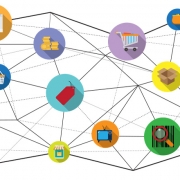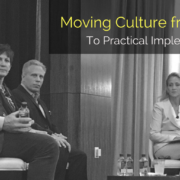5 Customer Experience Trends For The Next 5 Years
From pre-mortems to predictive analytics, companies are leveraging technology and new thinking to attract, acquire, and retain customers
Every few years, a business philosophy or mode of thinking magically makes it to top of minds and headlines. If you’re a startup founder trying to quickly acquire customers, you likely hear “growth hacker” thrown around more than average when asking around about obligatory new hires. For professional communicators preoccupied with the art and science of it all, “data-driven storytelling” is the term du jour. As of late, if you’re remotely close to brand strategy or customer success, you’ve probably become extremely familiar with the concept of customer experience, or “CX” for short.
From the cultivation of customer loyalty to predictions about shifting consumer expectations, the importance of CX is becoming blatantly obvious, and companies across the globe are starting to integrate it with a broader range of business operations. This has coincided with a reconsideration of what CX can do for a company, including providing invaluable consumer data, reinforcing a brand’s positive image in the minds of its customers, and ultimately reducing churn.
Trend 1: Connecting CX to business objectives
While it may seem obvious that companies attempt to modify customer experience in order to improve business outcomes, many professionals believe it’s difficult to make this connection explicit. Webb Stevens is the head of CX products at Qualtrics, and he says only 14 percent of practitioners see a direct and intelligible relationship between CX and business results: “This perception is undergoing a shift as technology improves, essentially connecting CX and business outcomes more effectively.”
One of the most significant ways CX data can be a driver of increased sales, exposure, and loyalty is as a predictor of future consumer behavior. As Stevens notes, “We need to anticipate the needs of the consumer.” He also explains that companies need to develop their CX platform internally: “Those who are outsourcing ‘experience management’ are being outcompeted by those who are bringing it in-house.”
Trend 2: Competitive brands will make personalization a top priority
The data companies use to improve CX also allows them to personalize products and services more effectively than ever before. Consumers increasingly expect brands to provide them with experiences that are tailored to their individual wants and needs.
Jamie Thorpe, commercial director of customer experience at Kantar TNS, notes this trend aligns with one of the core concepts of CX: “Because customers believe that brands have access to their data, the power has somewhat shifted to the customer. They expect brands to give them relevant and timely promotions, products, or services based on their personalized data. In other words, consumers expect brands to know them.”
According to Segment’s 2017 State of Personalization Report, 71 percent of consumers find impersonal experiences frustrating. As companies get better at personalization and consumer expectations continue to shift, businesses should expect this number to get even larger.
Trend 3: Predictive analytics will be used to improve CX
According to a 2016 Aberdeen Group report, companies that use predictive analytics are almost twice as likely to generate year-over-year customer lifetime value, which Aberdeen defines as the “consistent satisfaction of buyer expectations combined with the ability to grow client spend.”
When a company is capable of anticipating what its customers want, it can adopt proactive measures to keep them satisfied instead of constantly scrambling to respond to complaints and shifting attitudes.
Trend 4: A company’s culture and philosophy is crucial
Megan Burns is an analyst at Experience Enterprises, and she explains that data isn’t helpful to companies that don’t know how to use it: “There are so many technologies that are coming out right now – predicting and anticipating needs. In a lot of companies applying those to CX is like tuning up a 15-year-old car. Their basic model is outdated. I hope they will start to see technology as a means to an end, as opposed to the panacea.”
According to Deloitte’s Global Human Capital Trends 2016, a survey of more than 7,000 executives in 130 countries revealed that only 28 percent of them “believe they understand their culture well, while only 19 percent believe they have the ‘right culture.'”
Trend 5: CX is about providing the right experience for each customer
One of the biggest challenges for brands is to identify exactly what their customers want and deliver it. As Burns notes, “CX isn’t about luxury or more service – it’s about making it the right experience for what the customer is asking for.” This is an old principle, but it remains the best guide for navigating the new era in customer experience.
CXOs should recognize that we’re entering a uniquely difficult era for companies trying to distinguish themselves with superior customer experiences.
Smith offers food for thought: “Most fears are with the technology and how to make it work cross-functionally. CX is not a department, it’s a way of thinking.”












